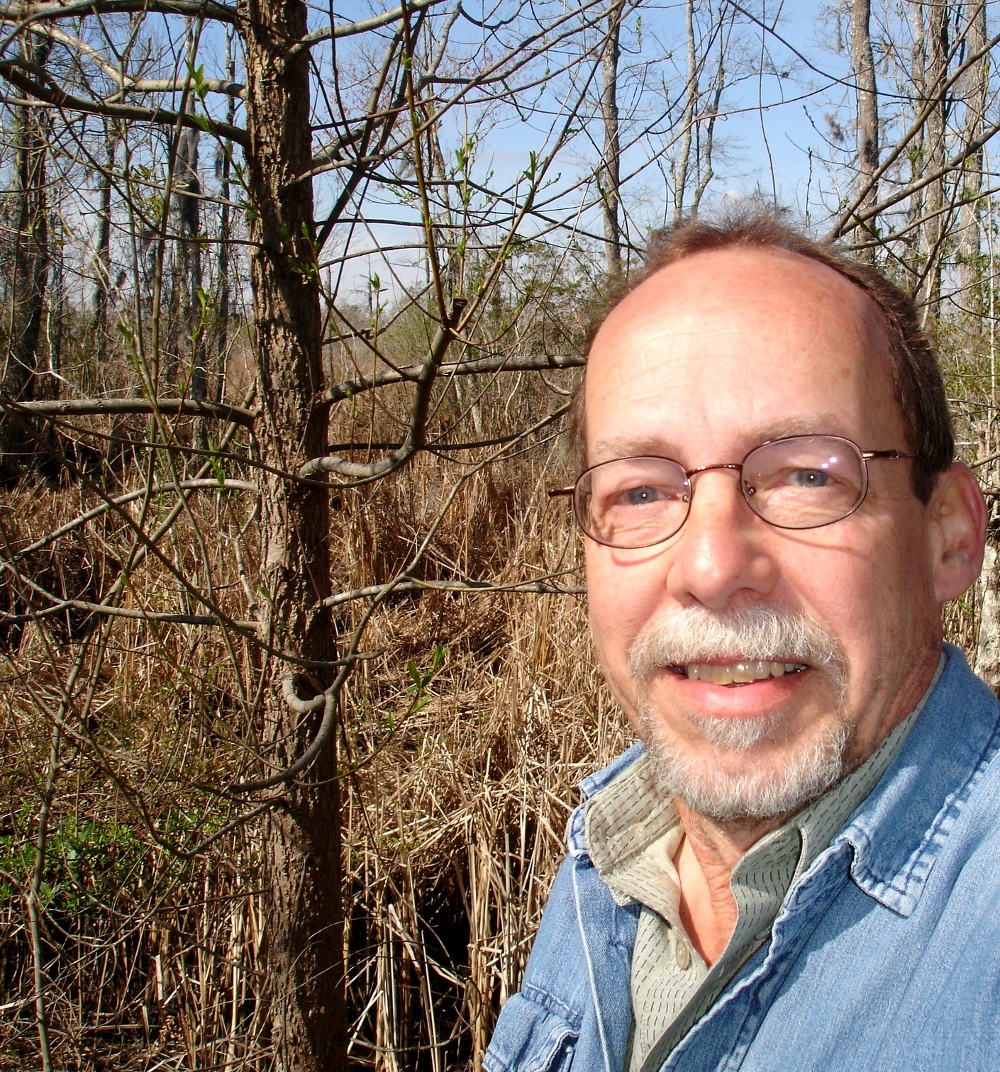“Coming Full Circle”: Q & A with Stained Glass Artist, Brooks Koff By student intern, Nydheri Brown and Writer-In-Residence, Jamie La Londe-Pinkston
Sib’s artist, Brooks Koff, was kind enough to sit down with us and chat about her journey as an artist, her life as a teacher and mother, and her Sib’s fellow artist and brother, Michael Van Hout.
The Sibs Show closes May 27th, 2017.

Begin Transcript
NB:What drew you to do a show with your sibling?
BK: Actually, Mike [Michael Van Hout] set it up. He asked Amy [Amy Grant, owner of Art in Bloom Gallery] about me showing in the gallery, and then it was her brainstorm to pair us together.
NB: Do you guys cooperate on a lot of stuff?
BK: No, not really much at all. I went to school for nursing. I’ve been doing this sort of work for twenty years. He’s [Michael Van Hout] been an artist for many more years than that.
JLP: What drew you to art after nursing?
BK: I was always crafty as well as he growing up. He was you know very much an artist drawing all the time and my mom always did craft sort of things. I was drawn to that, but I never pursued art as an option. So, before my daughter was born, I took a stained glass class. Then ended up working in the hobby store half-time while I was pregnant with her. Then started a painting career painting sweatshirts and t-shirts cause that was cool. So I did that for a number of years, and knew I wasn’t going back to stained glass, because I had kids around. Yeah, kids and glass, not a good combination.
When I really started drawing, I took a drawing class when I was pregnant with my son, my third child. So not until I was in my thirties that I started drawing.
JLP: So that must have been like a reawakening in a sense.
BK: It was great to learn, to be schooled in that sort of, to draw and all of that. I volunteered as an art teacher for twenty years for my kids’ school.
JLP: Was the reason you didn’t go into art might have been because Michael was doing that? I find that with siblings sometimes you feel like you can’t do the same things.
BK: The funny thing is that I always knew he was going to be an artist, but he didn’t discover that until he had dropped out of college. And then was twisting wire into shapes and someone said, “Hey, you can make a career out of that”. It was that realization for him that he could do that. It wasn’t that I was opposed to it; I just never been told it was OK to pursue that. It was never, “You should do this!”
NB: What other kinds of art do you like to do?
BK: I taught art for a number of years and I love doing that–teaching kids art. Drawing is a big thing with me, because people think they can’t draw. But it’s actually just that they haven’t learned, and they don’t stay with it. So when you get to sixth grade usually you’re like, “I can’t draw” (in a kid’s voice). People identify she’s a drawer, she’s a drawer, and I’m not. The ones that they are pointing to just love to draw and do it all the time. It’s like anything. Like soccer or any sport. You practice it really hard, you’ll do really well at it. Drawing is the same way.
I like drawing and crafting. Making jewelry. Doing anything.
NB: Which one of these pieces did you enjoy working on the most?
BK: Well, that’s hard to say, because when you finish them it’s like a wow, and that’s when I get enjoyment, the wow at the end of it. Blue Skies is amazing to me, because it has a lot of movement in it, like a Van Gogh-esque kind of play in it. There’s one called the Funky Bird that is just funky and strange and fun. I’ve been doing flowers for a long time. So the bird one was something.
JLP: We were just saying…
NB: Yeah when we were coming up with the questions, we were saying that [Blue Skies] looked definitely–
BK: And I was going to call it that. And my husband said, “You’re going to do a nod to another artist as a title?” And I was like “Yeah!” And I called it Blues Skies. Coming up with titles is not my thing.
JLP: I’m terrible at that. Like I just take the first line [of a poem] and make it the title, and then I put a space and that’s it.
NB: Call it what it is! Titles are confusing. It’s a crab! Call it a crab!
BK: Yeah.
NB: How do you arrange your color palette? Do you pick certain colors for each one like green and blue…?
BK: Yes, when I go to do a piece I will be inspired by what the glass is. Unless I know I am going to do a sun, and then I go see what sort of yellows I have. But a lot of times I let the color of the glass direct me as to what to do.
I feel like I have a good sense of color. So I’ll draw those glass pieces that I think might go and I will hold it up even, and do a comparison and decide, yeah, yeah, or no, that doesn’t work at all. I’m gonna go with this. But I usually have something in my mind of what color I am going to do. But not always. Sometimes I will play with it.
NB: Do you color the glass?
BK: No, it comes in sheets. So it’s sheets of…there’s a sheet of this color, there’s a sheet of that color. And some of them are this big and some of them are that big.
JLP: We were looking at this one [You are my sunshine], and some of it’s textured and some of it’s not. Do you make the texture, or does it come like that in a sheet?
BK: This green is textured like that, so it’s real bumpy and wavy. There’s a number of glass pieces that are like that. There’s one—the turtle—is bullseye glass; and so you see, it’s different textured glasses. Usually this other is like spectrum. It’s just a flat sheet of that color. This is kind of bubbled, kind of rippled—this yellow here (pointing to an example). So yeah, it just comes like that.
JLP: That’s neat that you can work with texture as well as color to create a sense of movement or depth. Like the sun really does look like it’s boiling over [You are my sunshine] , because it’s got the little bumpies.
NK: We wanted to know…a lot of the stained glass we looked at…they’re like mosaics. So how did you develop that style?
BK: I started with traditional stained glass. It’s very formed fitted. It’s like quilting with glass. You have to have a pattern and every piece has to line up exactly, because the solder can only hold it in place if it lines up exactly. I am not an exacting person. I did some traditional stained glass, but when I discovered this glass mosaic on glass, it totally freed me up completely to explore and enjoy making glass. Because there is no pattern, and there is no “this has to line up here, this has to line up there”. There’s none of that at all. I have a whole lot of freedom. I don’t use patterns at all. I just go to the glass and start cutting. So that gives me freedom too because they’re all my designs, they’re all unique, they’re all one of a kind. They may look similar, but they’re all done differently, individually I guess.

JLP: I’m pretty ignorant on how the glass is put together. We (JLP and NB) watched a YouTube video together where—
NB: What we watched was more like a traditional one. He took pieces of glass and wrapped something around it.
BK: Yes, foil, copper foiling. He had adhesive on it, and he went around the glass piece with it, and so it forms a little edge on both sides of the glass. That’s called copper foiling.
NB: Is it actual copper? Because it was like a different color.
BK: But if he were taking the glass piece like this. It’s like an adhesive copper foiling, and each piece has that on it. Then he lays the pieces together, and then there’s soldering.
NB: That’s what it was.
BK: Soldering holds it together. It’s a solder iron, and he’s melting it together. There’s like a thick coil of what looks like silver wire; and you’re melting the solder to wrap the pieces together. But that’s not what I do.
JLP: What you do—I mean they [traditional stained glass artists] have to measure it like really exact to get it in the frame, but what you do is more organic. So how does that work when you want to get it into a frame?
BK: So I take this frame. Let’s say I want to do a sun on that frame. Sometimes the frame will dictate what I do, and sometimes the glass will. What I would do is—you know what I’m gonna do…a sun on this—so I would grab my yellow, and I’ll cut that circle out. This framed glass has glass in it, so I’ve glued the glass into the frame. This is a sheet of glass [backing]. That’s how it’s a mosaic. So then I start and I glue the middle of the sun and then cut all my rays. You know, see so here, I cut a ray; but I need to make it fit the frame. So I cut it and make it fit the frame. Then I go back and then I cut these [the remaining] pieces for the background and everything is glued in place first and then after it sits for a while or whatever dries, then it’s grouted. The grouting holds it together and finishes it.
JLP: Is the grouting made with that lead sort of stuff?
BK: No, the grouting is like tile grout, except it’s black, black grout.
JLP: So, it’s a lot safer to do like as a woman, because you’re not using lead. That’s good to know.
NB: Did your work on the Airlie Gardens chapel influence anything done here?
BK: Um, that’s hard to say.
NB: Like after you did that [the bottle chapel], did you notice that you started doing things differently?
BK: Um, I don’t think so. But I do love myself a flower. So there were lots of flowers for the Minnie Evans things. That was a great experience to work with kids throughout the county and to have their work there. A side note is that one of my daughters—her stepping stone is right at the entrance to the chapel—and when we put that there, she said, “I’m gonna get married here one day.” And she is doing that in April of next year. She’s gonna get married there, yeah. So that’s really cool to see that full circle. Cause you can’t imagine that. Here she’s a kid at ten years old deciding I’m gonna do that; and it’s actually coming to be so that’s pretty cool.
JLP: How many of us get to live our childhood dreams?
BK: I know! And her own art work, you know. So that was cool. That’s a neat little thing.
JLP: What a beautiful place to have a wedding too. I love that chapel.
BK: Oh man, it’s amazing. Ginny [Virginia] Wright-Frierson who did it—she’s just an amazing artist and she was the one who proposed the grant for it. And drew the different artists into it. But she spent a whole year out there building that chapel. A lot of blood, sweat, and tears on that. But yeah, it’s cool. But I don’t know if it influenced me, or I influenced it.
JLP: Isn’t that how it goes with art? I don’t think it’s ever your own.
BK: No.
JLP: It starts as kind of your idea then you find the art tells you it wants to go its own way.
BK: Yeah, it’s true.
JLP: Do you find that true of yourself?
BK: Yeah I think so. I think so. I wouldn’t have known…this…this is my first show for a gallery I’ve ever had, and so I wouldn’t…I don’t know if I knew that when I was going to college to be a nurse that I would someday have a gallery show. That’s for sure. You know that’s pretty cool. And to share it with my brother. That’s also neat. That’s what I like about this whole thing.
JLP: That’s kind of full circle in a way.
BK: Yeah, it is, it is.
JLP: So what was it like growing up with “Mr. Michael” as we like to call him at DREAMS.
BK: Is this off the tape. No?
JLP: No, it’s on tape! You can tell us off the record…
BK: (whispers) OK, OK I’ll tell you. (normal voice) No, we were really close, because we were close in age. He’s much older. No. He’s older than I am. Let’s make that clear (laughing). So, we were closer in age, because there is a huge span in our family. The older sister is twenty-one years older than the youngest. Same mom. Same dad.
JLP: So there was a bit of surprise there along the way.
BK: Yeah, there were several of those probably. But Mike and I are right in the middle, so I always say I’m the well-adjusted middle child, and I’ll include him on that. But he’s a little neurotic (jokingly). I think we got along really well. I remember I was telling my daughter this weekend that I always remember him coming home from school…And the sisters would make him breakfast, make sure…We kind of, we spoiled him.
JLP: He was spoiled!
BK: He was spoiled, but he’s a really good guy, because he’s real comfortable around women. I think he was surrounded by girls his whole life so.
JLP: He sounds like he was a good brother, like he deserved all this extra love. Like he didn’t pull your pigtails and—
BK: No, no, we got along. Well, there was that one time where we didn’t get along very well. I mean he lives to this day to regret it. We were switching classrooms at the same Catholic school. And he pulled my chair out, and I didn’t know it. And I went to sit down and hit my head on the back of the chair.
JLP: Oh! He probably didn’t mean for that to happen.
BK: No, he didn’t. He thought I’d notice, but yeah it was not good. But other than that! When you grow up, you grow to appreciate your brothers and sisters a lot more than when you’re a kid. When you’re living with them, you can’t appreciate them very much.
JLP: But it sounds like you were close.
BK: We were, we were. Close in age, and because we enjoyed each other. He was a talented guy even early on. I have five children, and it took my having my fifth child to realize that kids come out who they are a lot of times. You as a parent come around them to try to provide as best you can for each one, but they’re really born who they are. So that was an interesting insight after seeing my kids, because you have the same parents but you’re so different. We have so many different personalities running around in our family. And you know we have the same parents, but personality-wise we’re very different.
JLP: You and Michael have both taught art, and how did your experience—like you said with your fifth child, realizing children are who they—how did that affect you as a teacher?
BK: Well, I love teaching art because, even though you present the same thing to each child, their expression of it can be so different. And it’s just so rewarding to see that. Like, hey, look at these dogs or whatever, and they’re all different. So I appreciated that a lot that art can be explored. You can present something, but what somebody does with it can be very different. Sometimes that took pressing in, directing kids more than they would have wanted (laughing). But I think that’s what made me a good teacher, because I got something out of them they didn’t know was in them. I think that for teaching art you have to have that sort of thing too where it’s not just “do whatever you want,” but you know, “if you laid it this way” you know, “look what it does.” So it’s that sort of thing. Exploring art versus just handing them stuff to do. And there’s a lot creativity in that, but I think it helps to do a little bit of both.
JLP: I always think of it as a the Kid and the Ed. When you’re writing you have to be the kid, and then you have to come back and be the editor. And the editor cleans up all the mess the kid makes. But you got to let the kid come out first. Like not saying no to your ideas.
BK: Right but then you need directing. “That’s beautiful. How about if you duh duh duh duh.”
JLP: My favorite art…do you have a favorite art exercise, Nydheri? Cause mine was always when I was a kid Drawing on the…
BK: Right Side of the Brain. That book, that book was a like a (explosion noise)!
JLP: Yeah I had a teacher who turned…I think it was like a Van Gogh chair…
BK: Upside-down.
JLP: Yeah, and I had a teacher who was like, “You’re gonna draw this chair.” And I was like, “I ain’t gonna draw this…it’s like Van Gogh.” She’s like, “No, we’re gonna put it upside-down, and you’re not gonna think of it as a chair.”
BK: Right, exactly.
JLP: And I was like, “Oh! I can draw!”
BK: And it turned out amazing. I did that same thing with my son when he was in second grade, and the whole push was we’re gonna do art notebooks. So we bought them all sketch pads. Everybody had a sketch pad. The first exercise was an upside-down drawing, and his was a hare, like a rabbit. And it was incredible. It was like “Oh my gosh! It’s amazing!” So I had gone to collect him, and he had drawn on the cover.
JLP: Hey, but that was a good opening!
BK: I was like…oh! (laughing) So that was pretty funny. Yeah, that’s a great exercise.
JLP: What about you, Nydheri?
NB: I don’t know…
JLP: One that opened you up? Like, “Oh, I can do that!”
BK: I got one. I took a drawing class for my brother, and we were doing measuring thing, so you see like they’re getting proportion. That’s six thumbs high and that’s…
JLP: Oh, so that’s what they’re—I always just thought that was a pretentious thing they did in movies.
BK: Yeah it is (jokingly). No, it’s not. It’s actually trying to see how proportionally…like how that whole canvas thing…it’s like, you know, if you did three at the bottom, and probably like eight or nine at the top or whatever. So that was that, but I couldn’t do it. Then, like he did line contour drawing, and that was an opening. For me, that was a launch into being able to draw was being able to look at something, and just drag your pencil. Have you ever done it?
JLP: Yeah.
BK: Either contour drawing or blind contour drawing. For me that exploded my being able to draw.
NB: This semester at DREAMS I wanted to draw, to cut a pineapple on a lino [linoleum] block, but all I had was a picture. And it wasn’t big enough to go on the thing [the block], so I copied it from my phone. Like without really looking. I just tried to follow it the best I could.
BK: Yeah.
NB: And it came out pretty good.
BK: It does, because that overrides what you think it is, cause when you think pineapple you think it has to be a certain way. But really it doesn’t ever really look that way we think it is. That was in that Drawing On the Right Side of the Brain. Like a cup of water, you know you want to draw it: two circles that go like that and a line across the bottom and the top. But it’s like no, if you looked at it from here, it’s just these circles. Or, you know, it’s how you look at something to draw it.

End Transcript
Monday, June 12th, 2017
Blog
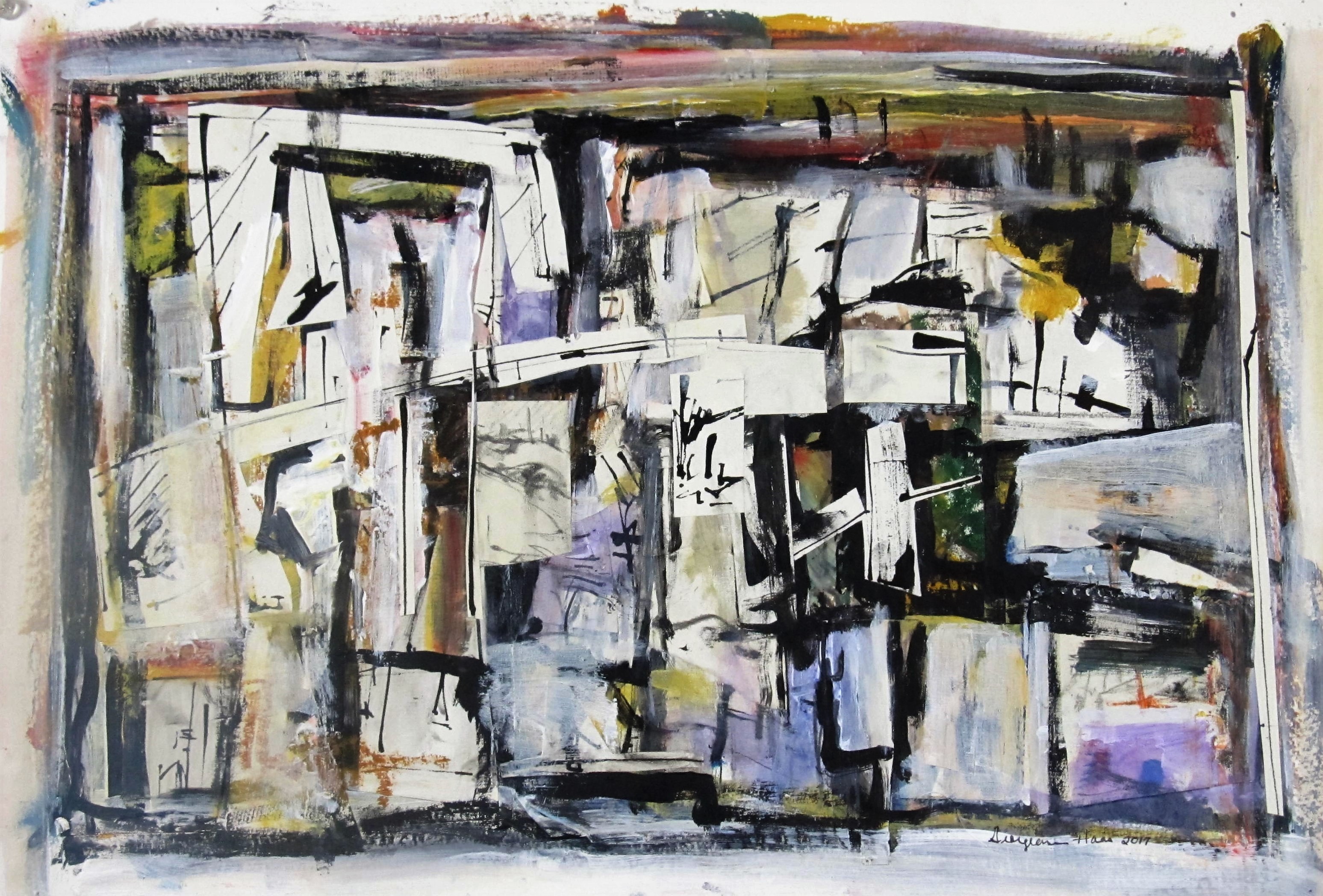

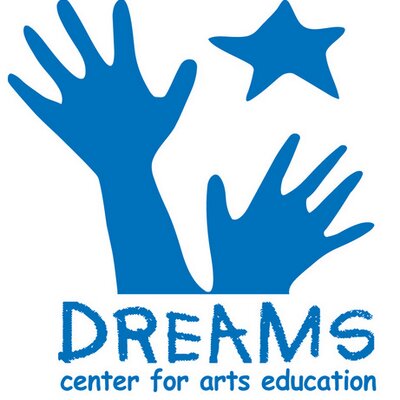


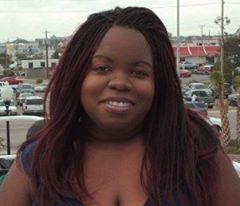




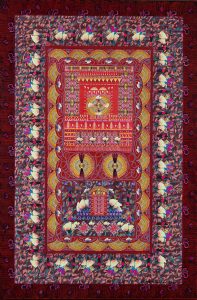







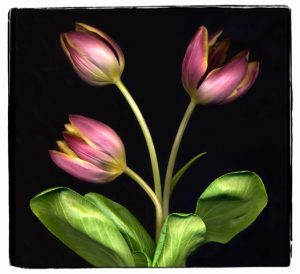



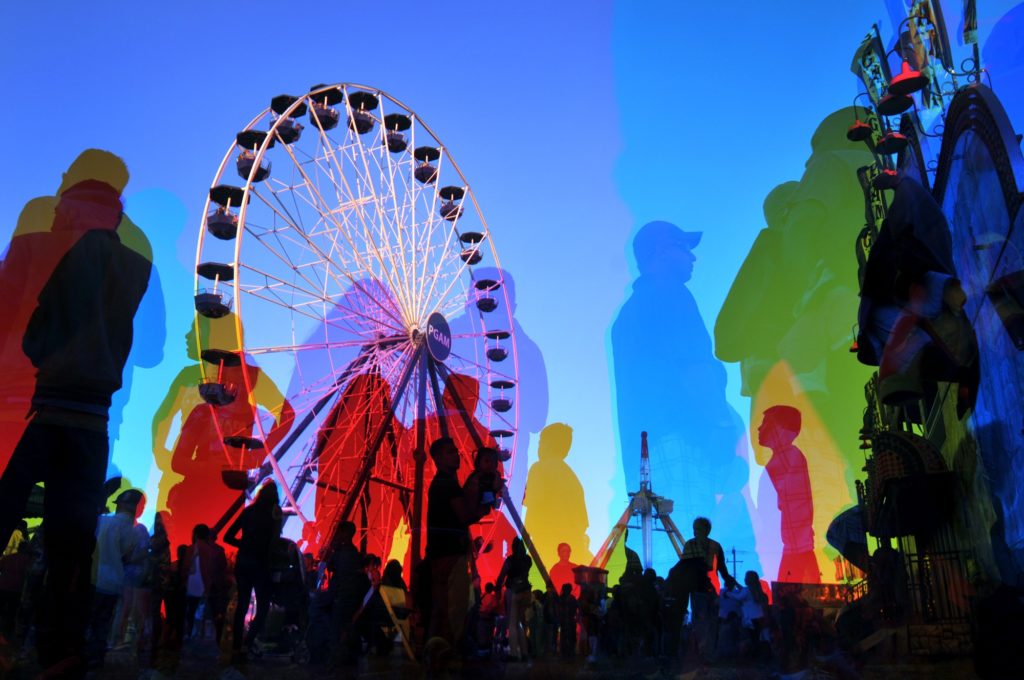







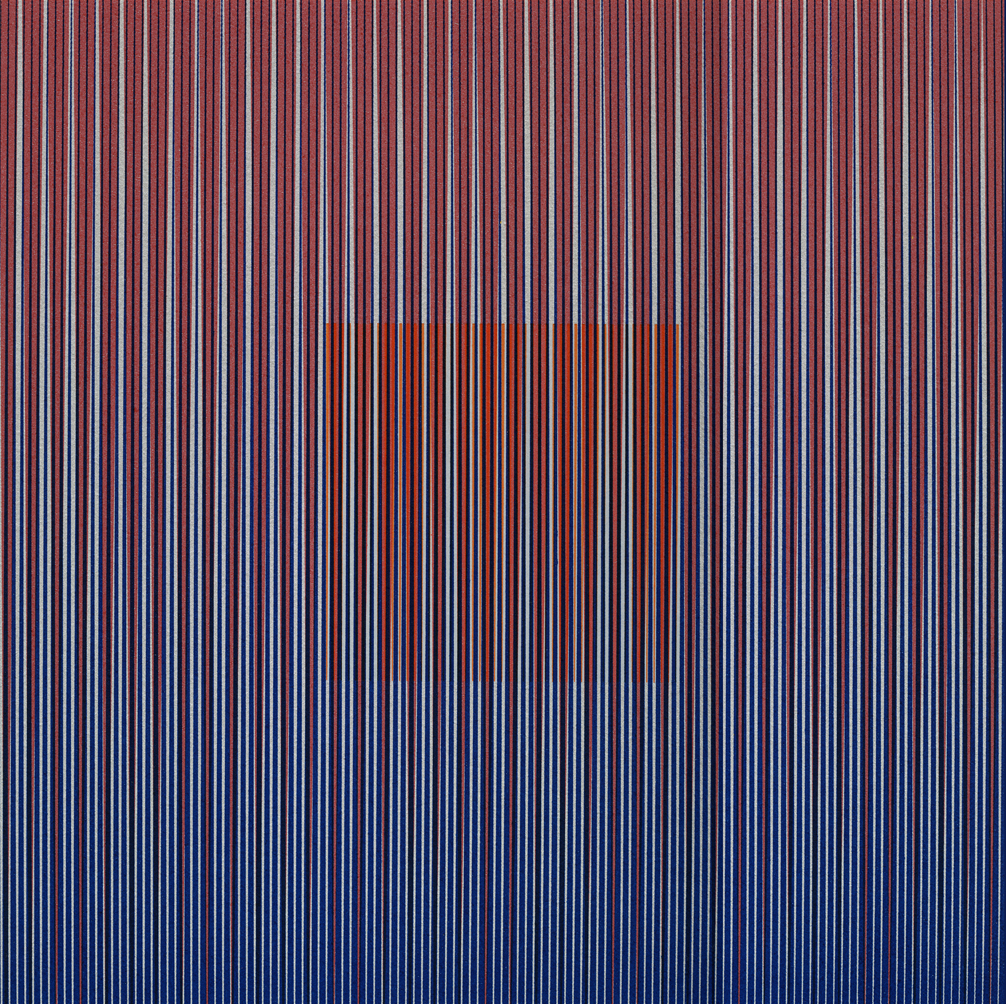





 Join us at 216 N. Front Street for a pop-up exhibit: “It’s About Time: Art by Elizabeth Darrow, Virginia Wright-Frierson, and Friends.” This unique, pop-up exhibit includes a wonderful selection of larger works by Art in Bloom Gallery artists. This show will be exhibited on the First Floor of 216 N. Front Street (the former Expo 216 Building) in downtown Wilmington, NC.
Join us at 216 N. Front Street for a pop-up exhibit: “It’s About Time: Art by Elizabeth Darrow, Virginia Wright-Frierson, and Friends.” This unique, pop-up exhibit includes a wonderful selection of larger works by Art in Bloom Gallery artists. This show will be exhibited on the First Floor of 216 N. Front Street (the former Expo 216 Building) in downtown Wilmington, NC.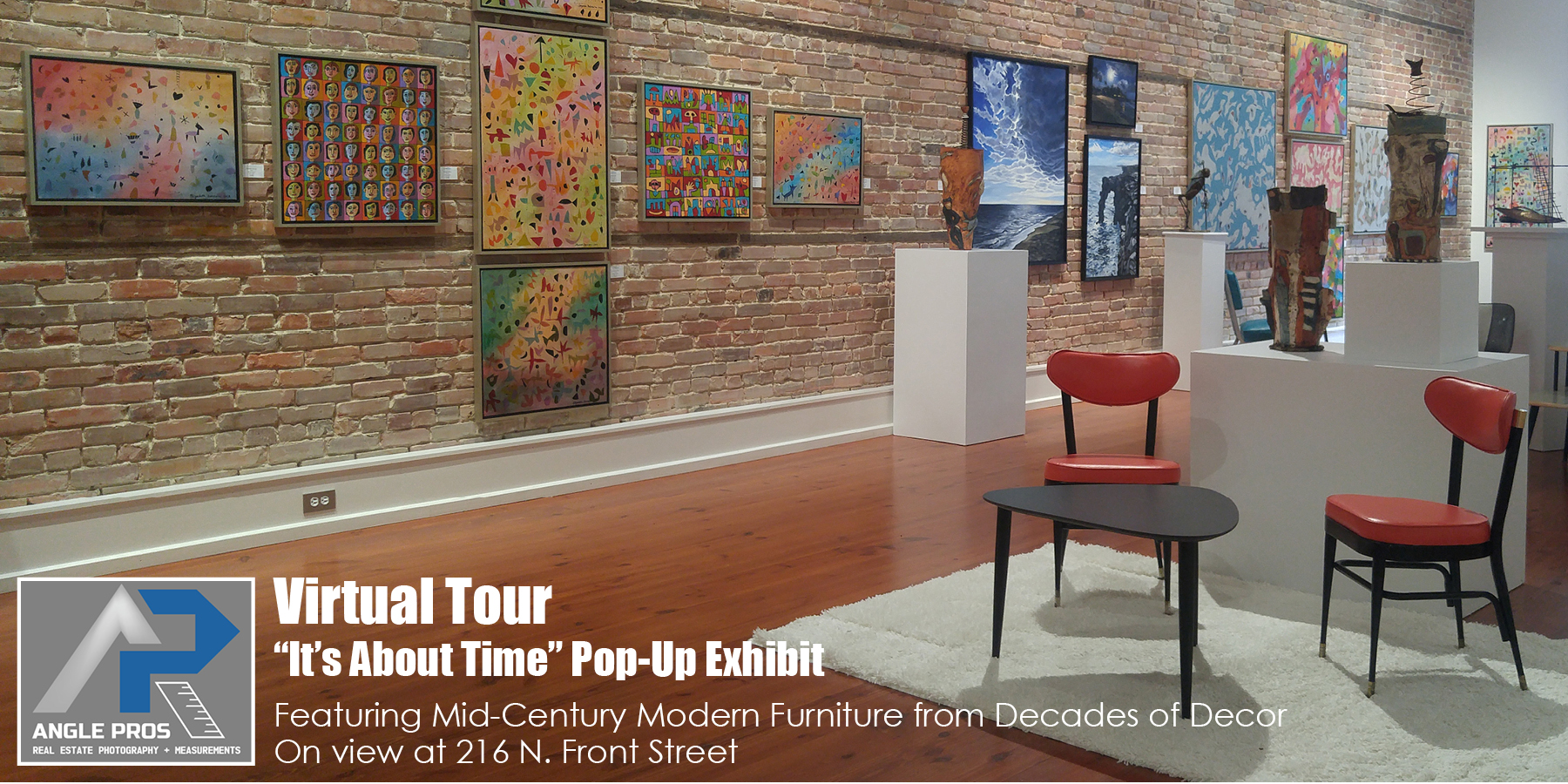


 Roberto Vengochea, Jewelry Designer
Roberto Vengochea, Jewelry Designer

 Photo by Sherm Hayes
Photo by Sherm Hayes
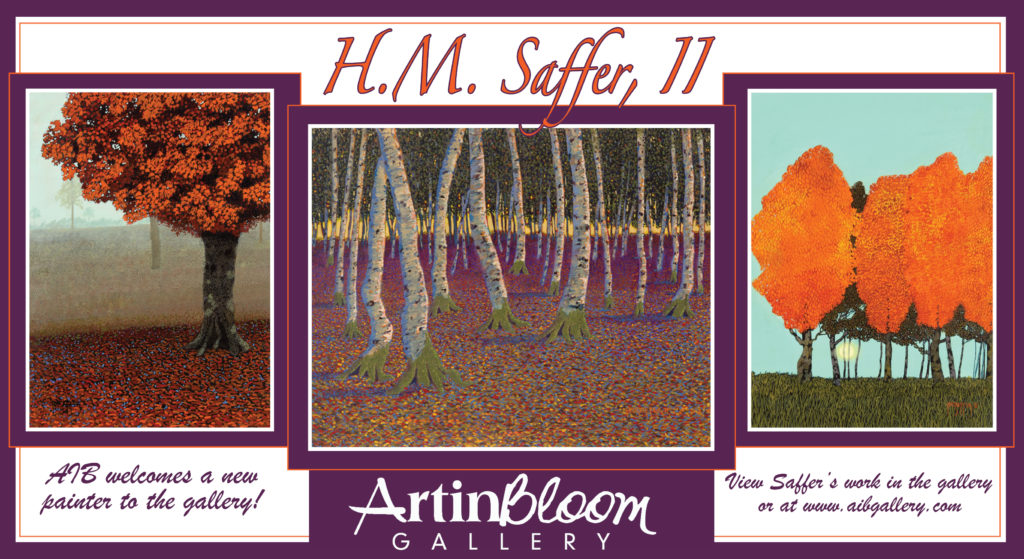
 H.M. Saffer, II, Artist
H.M. Saffer, II, Artist

 Joan McLoughlin – Painter
Joan McLoughlin – Painter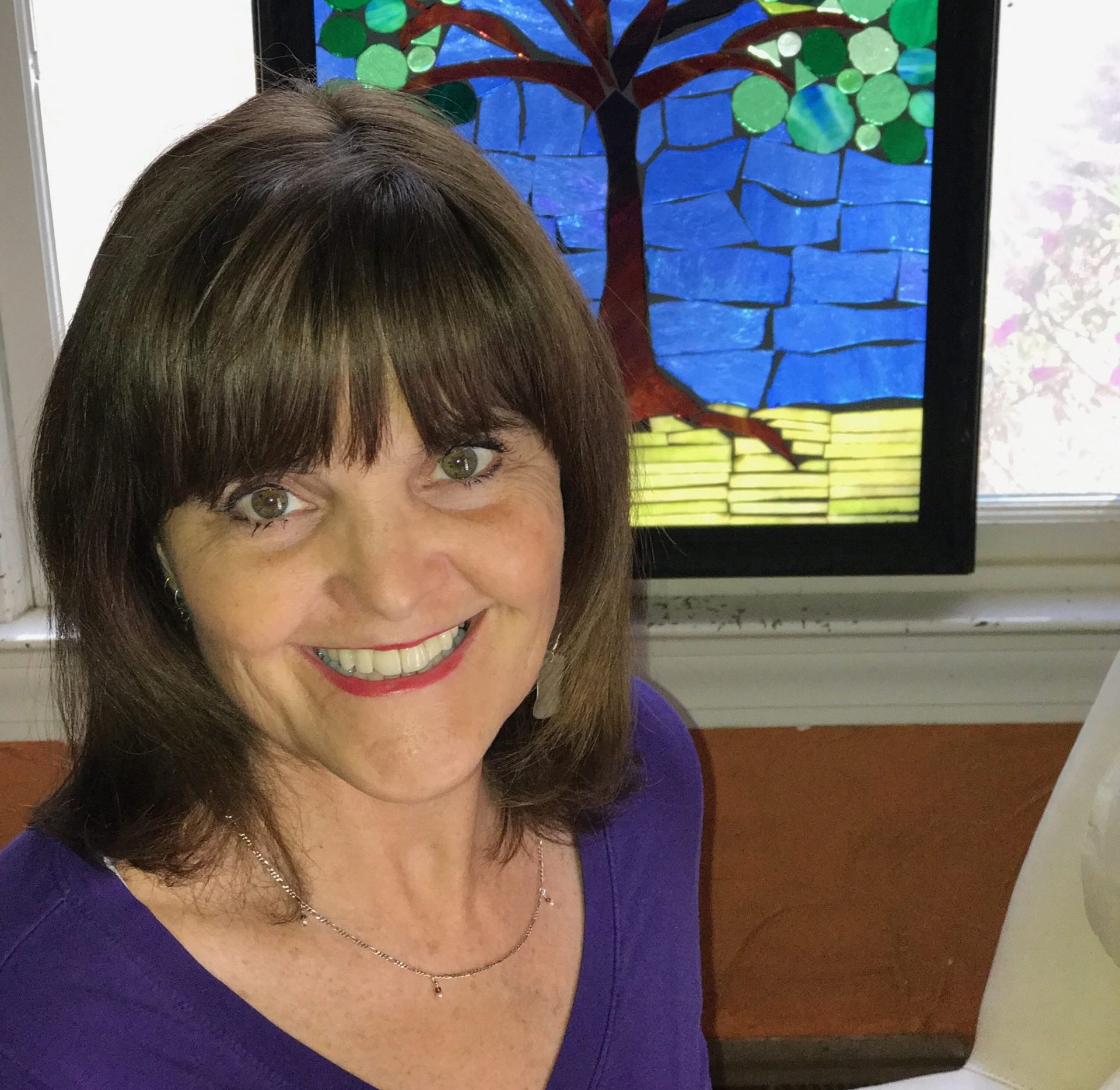

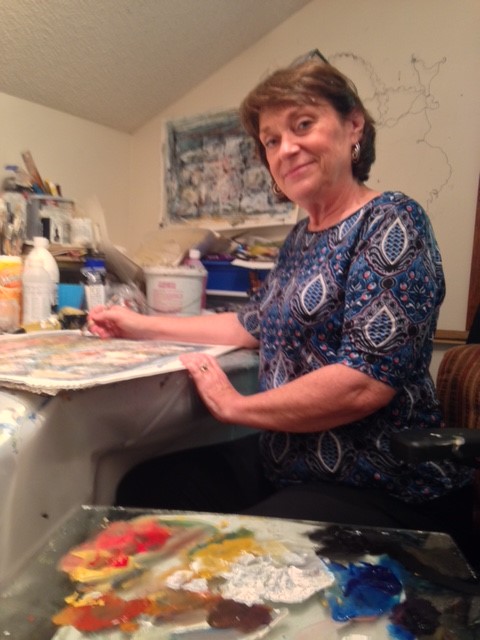
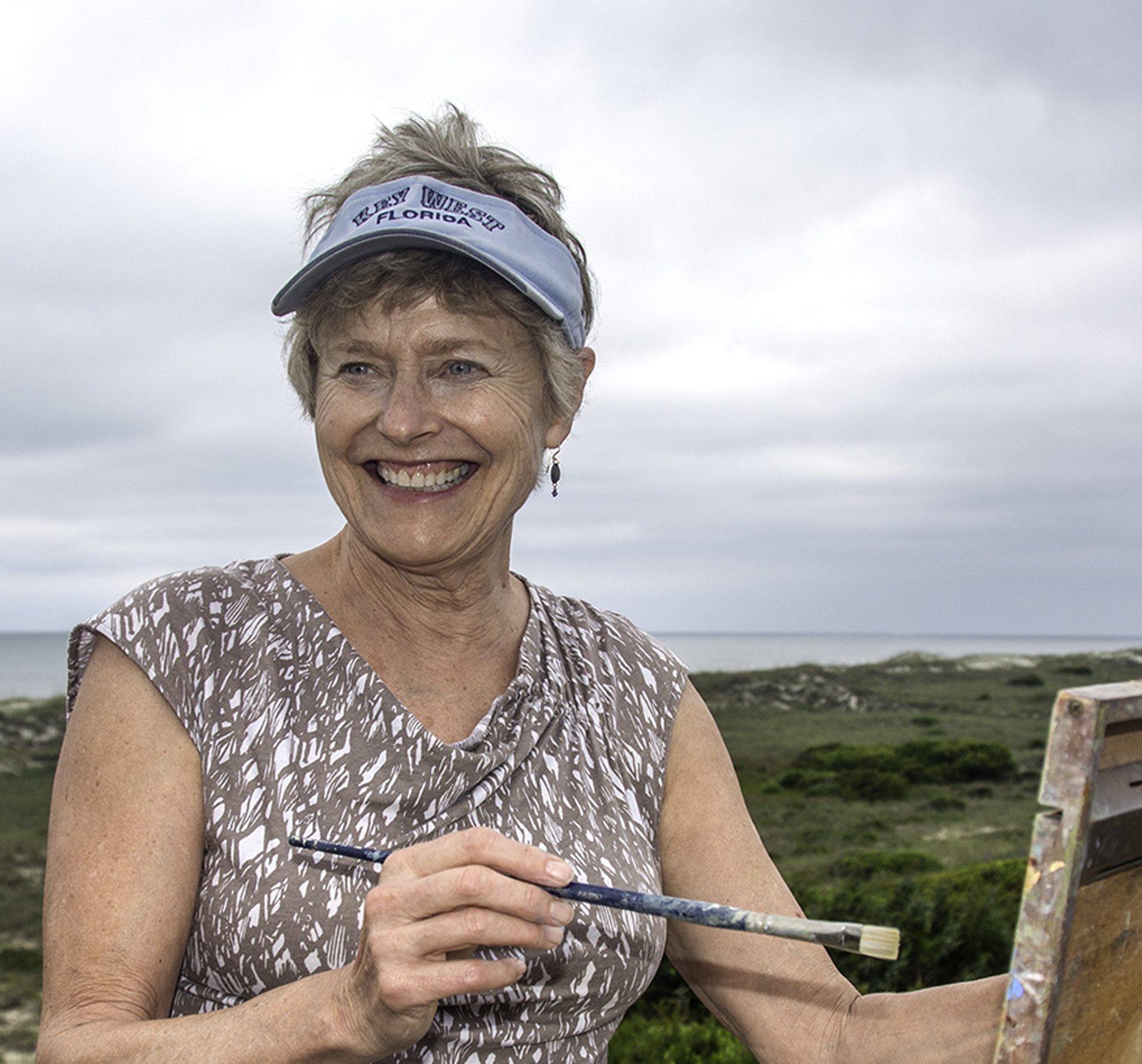
 Acrylic Paintings, by Mark Gansor
Acrylic Paintings, by Mark Gansor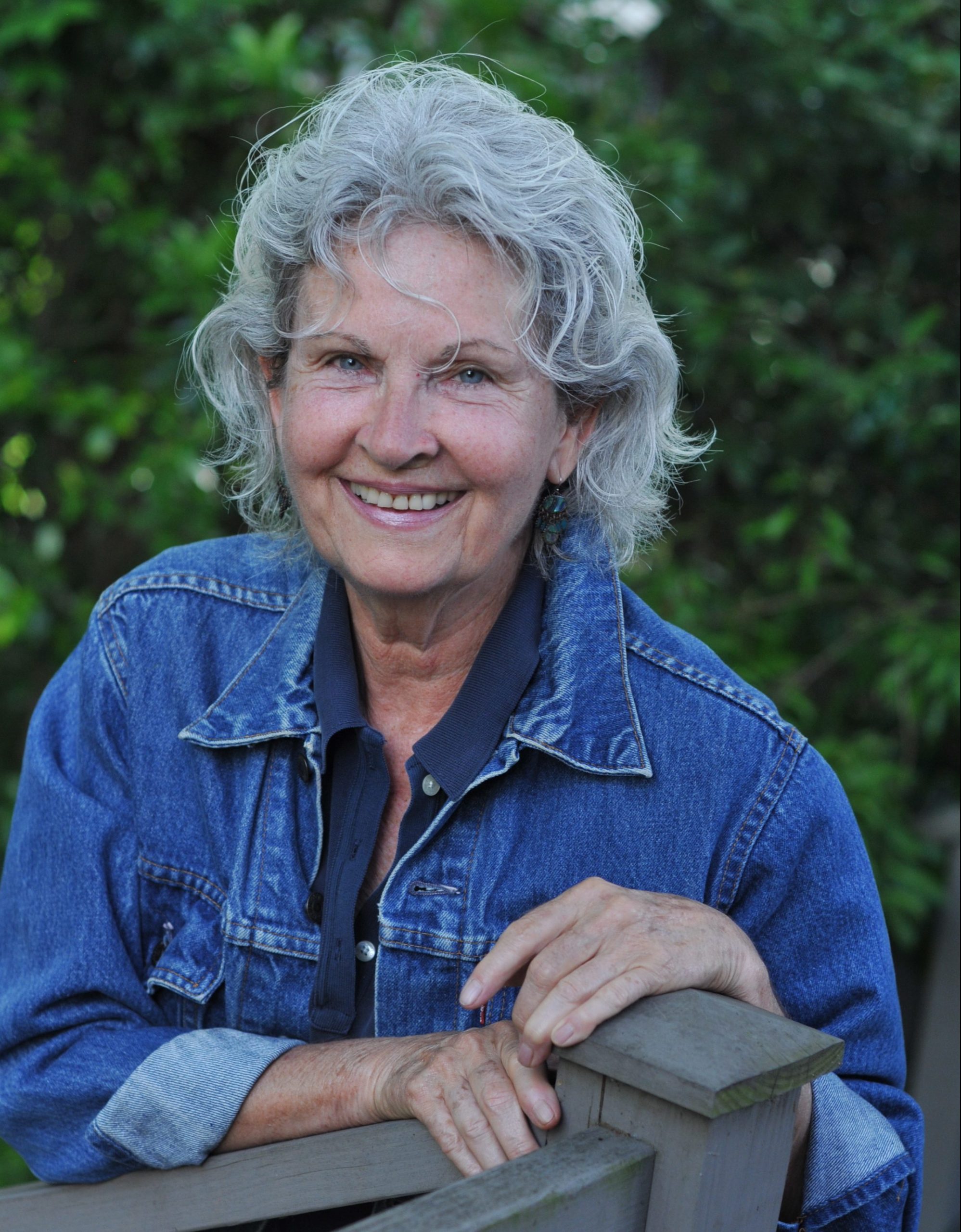



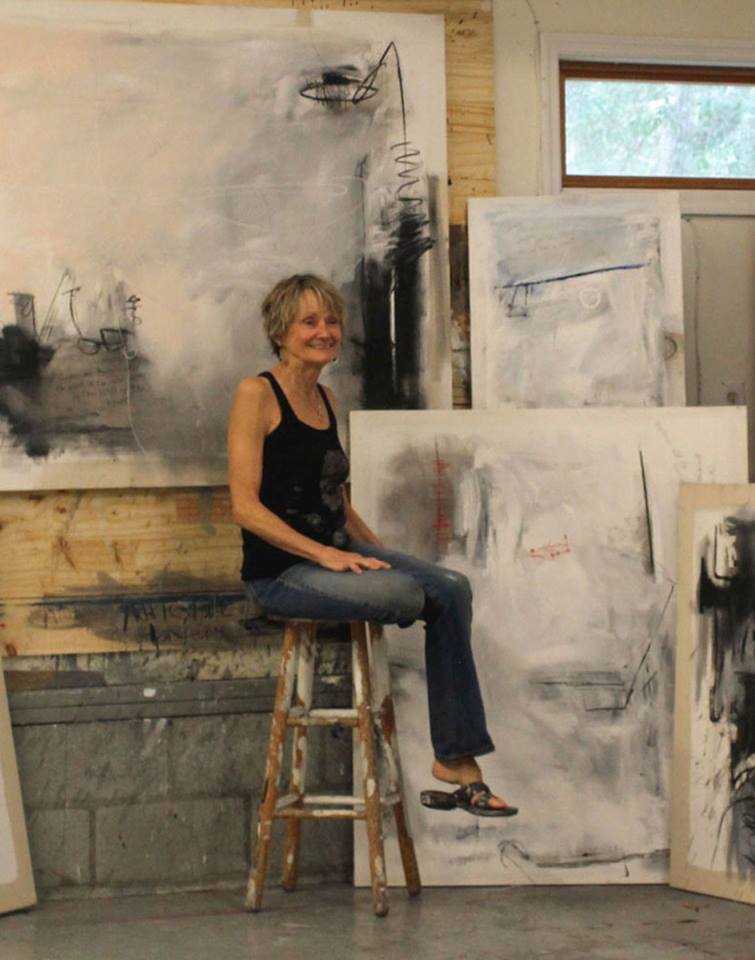

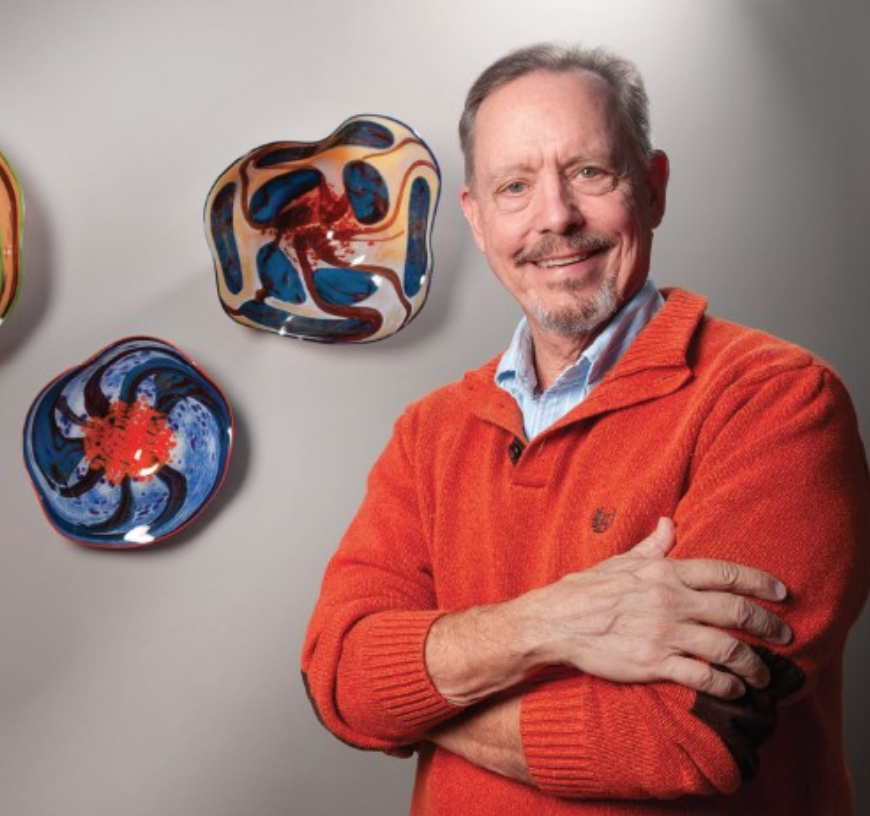 Photo Credit: Allison Potter
Photo Credit: Allison Potter